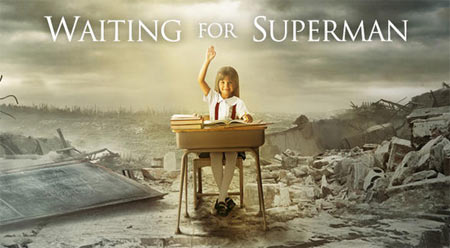While in Laos, we spent an afternoon with Lenou Sypasurt, a young man with an extraordinary vision for his country: to increase literacy among children. With money he saved from working as a dishwasher in Australia, he rented a small house near Luang Prabang and converted it into a library and classroom. Above is a short pro bono video we produced about Lenou, his library and the kids who visit it to help raise money and attract volunteers. Enjoy, and visit his site if you’d like to help out!
Silverdocs: A chat with Bob & The Monster Director
24 JunIt doesn’t matter if you don’t know who Bob Forrest is, or recognize his alt-rock band Thelonious Monster. His is the story of ’80s and ’90s rock in America. Silverdocs selection Bob & The Monster is a throwback to that time, including both the sublime and the ugly, and it’s all due to a huge body of well-curated footage. Rock stars just love to document themselves. But this film is only “rock doc” in part, and purposely so, says director Keirda Bahruth. It’s also a redemptive story about the road to sobriety and an advocacy piece about drug and alcohol recovery. I had the opportunity to chat with Bahruth after the screening about how she came upon this treasure trove of footage, her day job producing reality television, and her decisions to stray beyond the behind-the-music format. You can check out my full Q&A with the director at the Washington City Paper blog. And stay tuned for more Silverdocs coverage.
Art Tuesday: DC street art spotting
21 JunDuring a vintage store shopping trip down U Street this Sunday, I came across this “Gagged Washington” on the side of a building owned by DC Vote founder and board member Daniel Solomon.
Micro Doc on Regina Holliday’s “The Walking Gallery”
9 JunLast night we documented Regina Holliday‘s Walking Gallery of health care stories and advocacy at Kaiser Permanente’s new Center for Total Health. Above is the “micro doc” we put together about the event. We’ve been filming Regina since she lost her beloved husband Fred to kidney cancer in 2009. Since then, she has been using her paintbrushes to advocate for better access, more transparency and safety in our health care system. Her art advocacy first began with a rice paper mural placed at 4 in the morning on the wall of a DC deli. Next was a gas station, where over months of tireless work she painted a massive mural titled 73 Cents. She’s painted canvases in plain air and even the backs of business jackets worn by activists. It’s this last surface that has inspired her latest project: The Walking Gallery. That’s right, a gallery of moving art! Best of all, it can go wherever the wearer goes. You know how much we love art that says something. Well, Regina’s art sings it aloud, shouts it from the rooftops, and stops you in your tracks. She reminds us that our work as artists can indeed make a difference and so it’s been our absolute pleasure to share her story.
The challenge of profiting from social issue films
6 JunThe New York Times recently published an article about Participant Media‘s struggle to profit from films they distribute about the important issues of our time. It’s no secret that social-issue docs and thoughtful fiction indies sell significantly worse than major blockbuster thrillers in 3D. Yet Participant’s efforts are compelling. They continue to work to distribute films and develop social action campaigns that go along with them. The challenge is not only making this distribution sustainable but being able to reach beyond the crowd of people who already support your cause. How to make a do-gooder film self-sustaining? Below are a few general suggestions:
- Help from the Community: Films like Waiting For Superman or The Cove need to be supported by more than just movie ticket sales. Screenings need to be supported by non-profit organizations and community groups whose work is aligned with the issues presented in the film. Marketing films is really expensive and so we need the activist networks already reaching to the wider world to spread the word.
- Help from Theaters: This may be controversial but let’s encourage theaters to support films with do-gooder messages to get a better cut of ticket sales. Many for-profit companies have a percentage of their profits go to philanthropic organizations. Why not encourage theaters who are profiting from films to support those that help to make our world a more open place?
- Help from Corporations: Do-gooder films need to rely on funding not just from non-profits and grants, but also from for-profit organizations. This funding model needs to work in a way that there is not conflict of interest; that underwriting is made without the organization having a say in the vision and voice of the film.
What are your ideas for making do-gooder films more sustainable?
Video: Regina Holliday Painting HCAHPS
17 MayLast week we were able to help out Regina Holliday with her entry into the Design for America contest. We spent a few hours with her, filming as she painted accross the street from the George Washington University Hospital. Her goal was to depict the hospital’s HCAHPS data as a report card. We’ll let the video explain the rest.


